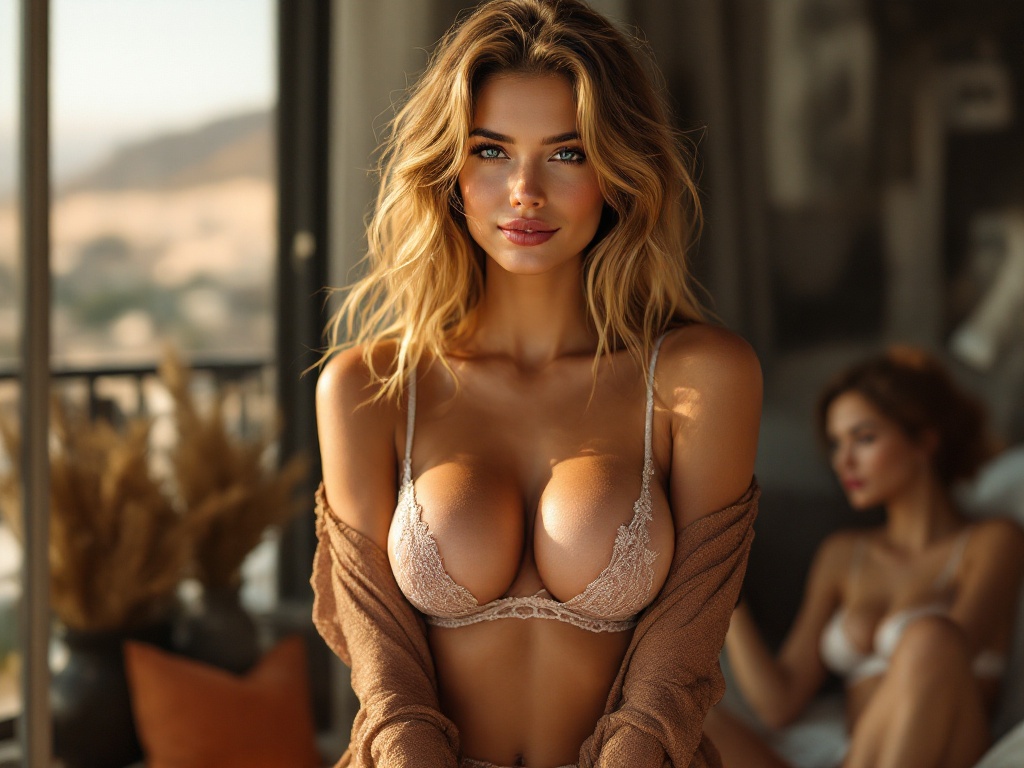The digital era has brought about intriguing overlaps between innovation and imagination, especially in the domain of erotic imagery. Among these advancements, deep nude technology emerges as a particularly fascinating breakthrough. Utilizing artificial intelligence to produce hyper-realistic nude visuals, this technology prompts vibrant debates about its impact on artistic flair and ethics. As we explore this subject in depth, our aim is to uncover both the exciting aspects of this innovation and the controversies surrounding it. We will investigate how deep nude technology is shaping artists’ approaches and transforming the erotic art landscape. From the inner workings of the technology to the moral dilemmas it presents, there’s a rich story to tell within this captivating narrative.

Understanding Deep Nude Technology
Deep nude technology employs cutting-edge AI algorithms, specifically neural networks and generative adversarial networks (GANs), to craft images with astonishing realism that blend effortlessly with the real world. This process relies on vast databases of human body images to “educate” the algorithms, enabling them to mimic and reproduce the subtleties of human form. The outcome is a series of images that appear so lifelike, viewers may struggle to tell apart reality from digital creation. Recently, this technology has seen rapid advancements, highlighting the core progress in artificial intelligence. Its potential goes far beyond erotic content, impacting various facets of visual art. To truly appreciate deep nude technology, one must first grasp the essentials powering its existence.
The Mechanics Behind the Technology
At the heart of deep nude technology are neural networks. Modeled after the human brain, these networks learn patterns and features from enormous datasets. When paired with GANs, the technology achieves remarkable refinement. GANs use a two-network system: a generator that produces images and a discriminator that assesses them. This dialogue fosters a continuous enhancement of image quality, resulting in outputs that are increasingly intricate and convincingly human-like. As creatives and tech experts tap into this power, the limits of artistry expand into uncharted territories.
The Evolution of AI in Visual Arts
A deeper look at the history of AI art technologies offers crucial insights into deep nude’s development. Over the years, several pivotal moments have paved the way for its rise, such as:
- The introduction of foundational algorithms for recognizing images in the early 2000s
- The surge of deep learning methods throughout the 2010s
- The arrival of advanced GANs circa 2014, which revolutionized art production
Together, these innovations have laid the foundation for deep nude technology, marking a significant evolution in artificial intelligence’s potential. Armed with such advanced tools, today’s artists can delve deeper into new dimensions of their craft.
Ethics and Controversies
Despite the exciting artistic avenues opened by deep nude technology, it also brings forth critical questions around ethics and consent. The capabilities of this technology can be misused or misunderstood, sparking serious societal issues. Concerns like intellectual property violation and the creation of non-consensual images lead the ethical dialogues. Navigating this terrain necessitates caution to guarantee responsible use and informed discussions about deep nude technology.

Navigating Consent in AI Generations
The critical importance of consent in AI-generated imagery cannot be emphasized enough. Since deep nude technology can create visuals resembling real people, obtaining consent is crucial for ethical creation. Both artists and engineers must be acutely aware of the ramifications of their work. Recent case studies highlight both respectful and improper uses of this technology, underscoring the need for strict guidelines and ethical adherence. For artists in this field, a dedication to upholding personal rights is essential.
Potential for Misuse
While deep nude technology presents pathways for innovation, it also poses the threat of misuse. The ability to craft convincing images can be exploited in various unsettling ways, notably:
- Producing non-consensual explicit material
- Breaching personal and intellectual ownership rights
- Fostering cyberbullying and intimidation
It’s crucial as a community to engage in debates concerning the legal structures governing AI-generated art. Existing laws often trail behind technological progression, heightening the urgency of these conversations.
| Advantages of Deep Nude Technology | Drawbacks of Deep Nude Technology |
|---|---|
| Stimulates creative innovation | Risk of creating unauthorized images |
| Boosts digital creativity | Pressures on copyright regulations |
| Nurtures novel methods in visual art | Possible misuse leading to harassment |
Deep Nude Technology as a Source of Artistic Inspiration
Amidst the debates, deep nude technology emerges as a powerful source of inspiration for many in the digital art scene. Its transformative potential not only questions conventional perceptions of erotic art but also prompts a reevaluation of creative processes. Increasingly, artists are incorporating deep nude technology into their work, leveraging this innovation to create riveting art pieces.
New Avenues for Digital Artists
Constantly evolving, the digital art world sees artists discovering new means of expression through deep nude technology. In the current artistic climate, this technology acts as a bridge between human sensation and machine finesse. Numerous creators have taken to social platforms to exhibit their work, showing how deep nude technology aids in novel explorations of human anatomy. Collaborative efforts, online galleries, and interactive experiences are just a few examples of how this technology is being harnessed. Thus, it not only serves as a medium but also ignites new discussions about desires, articulation, and identity in the digital realm.
The Impact on Traditional Art Forms
As digital art gains prominence, traditional art forms are equally influenced by deep nude technology. Many artists from the classical realm are responding by integrating digital methods with their customary practices. This fusion sparks an intriguing dialogue between historical and contemporary art, paving new routes for artistic growth. Moreover, this exchange between genres creates a rich tapestry of innovation that challenges established views of both erotic and fine art. The result is a dynamic conversation that keeps the art scene vibrant and influential.
Conclusion
As we contemplate deep nude technology, it is evident that its impact extends far beyond mere artistry. While it ignites inspiration within creative circles, a vigilant approach to its ethical implications is necessary. Discussions about this technology should be inclusive, involving various contributors to ensure responsible application. This fusion of technology and creativity heralds new frontiers in AI-generated erotic content while also requiring prudent navigation of its potential challenges. Together, we stand on the brink of a new era in artistic expression, where responsibility seamlessly blends with opportunity.
FAQ
- What is deep nude technology?
Deep nude technology entails the use of AI algorithms to generate lifelike nude images of people, often leveraging deep learning strategies. - Is deep nude technology legal?
The legality of deep nude technology varies across regions, particularly concerning issues of consent and intellectual ownership. - How does deep nude technology impact artists?
It acts as both an inspiration and a topic of ethical debate, expanding artists’ creative possibilities. - Can deep nude images be copyrighted?
The copyright status of AI-generated visuals exists in a gray area, dependent largely on the artist’s involvement in the creative process. - What precautions should be taken when using deep nude technology?
Ensuring consent and addressing ethical aspects are crucial for users of this technology.
